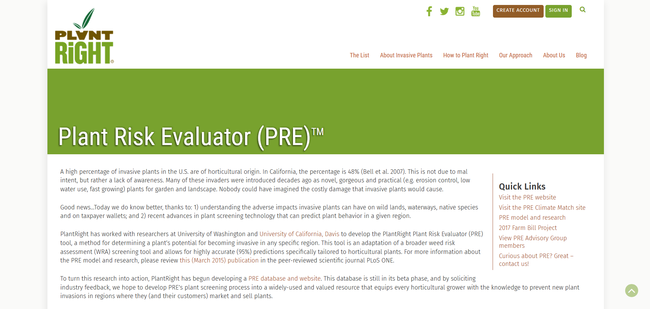Marie Jasieniuk is a professor with the Dept. of Plant Sciences at UC Davis.
A major pathway of introduction of non-native invasive plants into new geographical areas is the global horticultural trade in ornamental plants. Even though only a small percentage of ornamental species escape cultivation and become invasive, those that do can have major negative impacts. In California, more than half of the most invasive plants damaging the state's wildlands and natural areas are derived from horticultural ornamentals. PlantRight™ (https://plantright.org/) is a collaborative effort including nursery professionals, conservation and environmental groups, invasive plant managers, scientists, and government agencies working together to prevent ornamental plant invasions.

Using the PRE tool, individuals with botanical knowledge and experience with literature reviews and research conduct risk evaluations for a particular species and specific region. Twenty questions need to be answered including questions on the species' invasion history in areas with similar climates worldwide and locally, impacts on native plants and animals, reproductive strategies, and dispersal. Each question is yes/no with a weighted score that the PRE tool automatically sums over all questions to produce a final PRE score (out of 25). Species with a final PRE score > 15 are viewed as having a high potential risk of becoming invasive; those with scores < 13 as having low potential risk and those with scores of 13-15 as moderate potential risk. Once evaluations are completed for a species in a region, a set of three plant experts, one each from the fields of conservation, horticulture, and academia, review the invasion risk evaluations for thoroughness and quality from the perspective of the three disciplines. If information is lacking, more must be sought and added to an evaluation, which is then re-reviewed. Once accepted by the reviewers, the invasion risk information for an ornamental species becomes available to nursery professionals as well as to consumers (https://plantright.org/about-invasive-plants/plant-list/). In addition, consumers are informed of non-invasive ornamental alternatives.
PlantRight is a model of effective problem-solving arising from the collaborative effort of nursery (business), environmental, management, and scientific professionals.